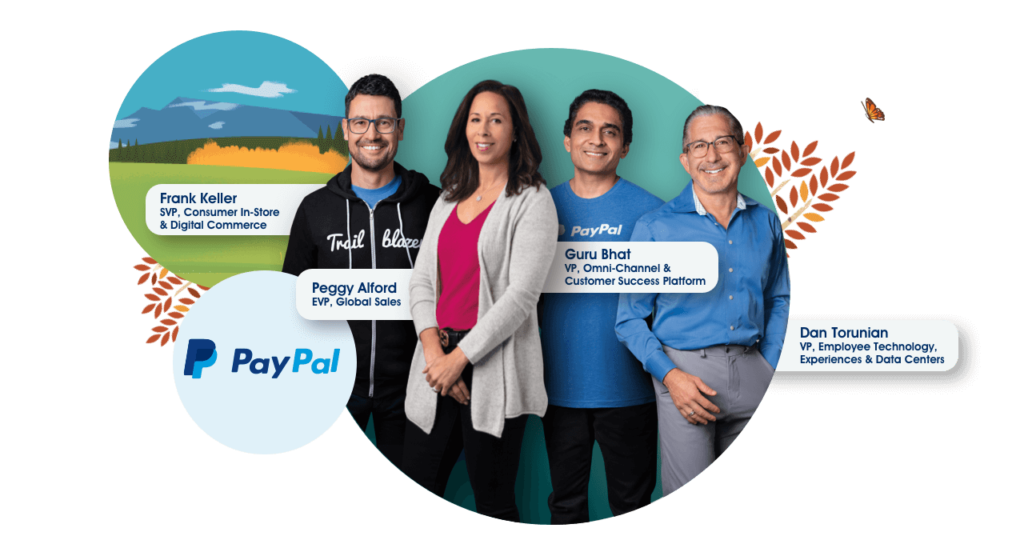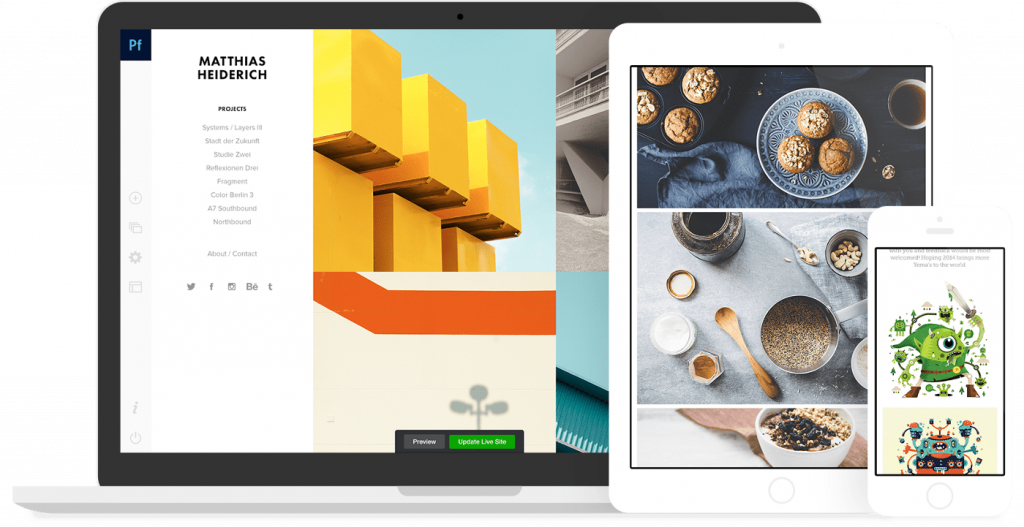7 Steps to Predict Website Design Trends
The world of the web and graphic design is quite large, so it is only natural that trends change so quickly. The trends in web design can sometimes change so quickly that it is impossible to keep up with all of them.
That being said, you can try to predict these trends to become one of the first adopters when they arise. It won't be easy, but it is entirely possible. Hence, here are the seven steps you should take to predict website design trends.
Table of Contents
The Latest Website Design Trends
Before you start trying to predict new website design trends, it's worth first learning about the latest ones, including:
- Accessibility: Web design has never been so accessible. With free and paid drag-and-drop website builders, even non-professionals can create websites that look professional. You no longer have to know how to code to create a complex website.
- AR, VR, and AI: Augmented reality, virtual reality, and artificial intelligence are all widely used in different industries, so it makes sense that they are also applied in web design. Interactive interfaces, highly personalised suggestions, etc. – all of these are possible thanks to AR, VR, and AI. Interactivity is paramount, so other trends related to it also arise regularly.
- Optimisation: Today, users expect a website that loads quickly and looks good on any device. That's why optimisation is so important. Designers are always looking for ways to increase website loading speed and improve mobile optimisation.
- Minimalism: Minimalism has been around for a while but will likely stay for years. This is because it looks good while also being ideal for branding. Moreover, sub-trends related to minimalism come and go—for example, one-page websites where all the information is listed on a single page. Unusual types of scrolling, such as parallax and horizontal, are used on such sites.
Why Should You Predict Trends?

So, why exactly do you need to try to predict website design trends? Can't you follow them when they arise? Well, there are several reasons why you would want to try to predict trends:
- Lead the industry by starting a completely new web design trend.
- Be ahead of your competitors by becoming an early adopter of a new trend.
- Meet consumer expectations and preferences by using trends your audience likes.
- Become a better web designer by learning more about your craft and the industry.
- Find new clients who value your ability to predict website design trends.
- Invest in the things that will be useful and relevant to your work.
How Do Trends Change?
The biggest reason why predicting trends is so tricky is that there are so many factors you should consider to be able to make accurate predictions. There are four significant aspects of the industry that influence how trends are born, change, and die:
- Technology: Website design trends are directly related to the Internet, so it makes sense that the development of different technologies impacts the trends that appear in web design. For instance, the spread of mobile devices like tablets and smartphones led web designers to focus on mobile compatibility like never before.
- Significant Events: Big events in the “real world” can impact what happens online, including web design. For example, changes in the law, such as the implementation of GDPR to protect user privacy, can affect how website owners design their sites.
- Consumer Preferences: While website owners and designers are two parties that directly influence how sites are designed, consumers are the third party with a say in this. Consumer preferences are constantly changing, so while one-day minimalistic designs are preferred, your audience may want something bolder another day.
- Unpredictability: Different push and pull factors that are almost entirely unpredictable can be incredibly influential on the rise and fall of different website design trends. Some trends become overused and go out of fashion, while others don't catch up and die before they are entirely accepted.
What Kind of Trends Can You Predict?
There are two different ways you can predict trends. One way you can approach this is by trying to predict which trends will become popular in the nearest future. Short-term trend prediction helps you become an early adopter of the said trends and be ahead of your competitors.
On the other hand, you might want to focus more on long-term trend prediction. In this case, you will need to try and predict which trends are here to stay in the long run or which ones may even become staples (e.g. mobile optimisation). Such trend prediction is vital for web designers who want to invest more time and effort in mastering the said trends and using them more effectively.
It's best to combine the two and try to predict short-term and long-term trends. By doing so, you will become a professional who knows all the ins and outs of your job. What follows are seven different ways you can start predicting website design trends. It may not be easy at first, but you will get better at predicting with more practice.
#1 Revisit Old Trends

The first way to predict trends is by revisiting old trends. On the one hand, you can look back at much older website design trends that have all the potential to become popular again. On the other hand, you can look at current trends and predict whether they will be popular for a long time or disappear the next month.
Revisiting old trends doesn't mean you should suddenly start using outdated approaches to web design. In many cases, when something old becomes popular again, it's not the same as it was at the time. Usually, the approach is different, or the trend has been reinvented somehow.
You can notice this with the current trend of using purposefully pixelated designs to create a 2000s-like look. Web designers who do this don't want to have a website that looks and functions like a website at the dawn of the 21st century. Instead, they are trying to make a website appear that way while looking stylish.
Younger generations can find such designs appealing because of the nostalgic trend of Y2K in other fields.
In practice, particular websites can use this kind of design. Remember that it needs to make sense. Why are you making the website look outdated in the first place? The Y2K aesthetic has been used by websites dedicated to selling Y2K clothes or discussing topics related to that decade (e.g. movies and music released in the 2000s).
By revisiting current trends, you can also try to predict whether specific trends are here to stay. The most common reason trends stay for a more extended period or become an essential part of web design is that they are sustainable. If You can maintain a trend long-term, it is more likely to survive in the changing world of web design.
The aforementioned mobile compatibility was initially a trend. When more consumers started getting tablets and smartphones and using them to access the Internet, website owners realised they needed to make their sites mobile-friendly. But once it became more apparent that mobile-friendliness plays a critical role, the trend became a foundational element of web design. No website today is created without mobile compatibility in mind.
#2 Learn About Design
Learning more about web design can help you predict new trends, as simple as it sounds. You may know everything about branding basics, colour theory, and so on, but you will still be surprised just how many things you still don't know anything about. The point is to keep learning and upgrading your knowledge and skills to understand your field better.
When you understand every aspect of web design, it will be easier to understand its most common problems. Many new trends directly result from web designers trying to solve these problems. In other words, by knowing the common challenges in web design, you can predict the types of trends that will arise to solve these problems.
For example, AR in eCommerce. Shopping online means that customers can't touch the products they want to purchase or see them as they would look in real life. Photos and videos can help customers better understand what the products look like in real life, but they can only do so much.
That's why AR is so popular now. This technology allows customers actually to see what the product would look like. They can view it from different sides and see its actual size. Of course, they still can't touch it like they would if they were shopping in a physical store, but it's still more realistic than photos and videos.
While studying web design, you will realise that there are many things you have never noticed before. You will likely start noticing patterns. That's when you can conduct your informal trend analysis. By collecting information from the trends seen in the industry right now, you could potentially see new trends arising or old trends going out of fashion.
#3 Follow Experts

While becoming an expert in web design is crucial, this doesn't mean you shouldn't follow other experts. Moreover, following experts and listening to what they say might be one of the easiest ways to learn about trends early on and implement them in your work before anyone else does.
Web design experts closely analyse the current trends to understand which ones will stay and which will likely become less popular over time. Moreover, they are also very knowledgeable about web design and know that specific old trends might come back at some point.
In some cases, such experts prefer to keep their thoughts to themselves. This is understandable because they want to stay ahead of the game and benefit from new trends by adopting them before others do. However, not all experts are like that. Many of them share their knowledge and predictions with others.
Some experts do so on their blogs or websites, publish books, or make videos where they explain which trends will be popular in the nearest future. Others spend their time on forums where they discuss their thoughts with other web designers. Industry events can also be a place where you can hear experts talk about what they think will be in fashion soon.
It's a good idea to find experts you trust and subscribe to their email newsletter, follow them on social media, read their books, or visit their speeches at different events. Of course, experts can also make mistakes.
That's why you shouldn't blindly rely on the words of these experts. They can be valuable to you, but you should still try to make your conclusions.
#4 Get on Social Media
Social media platforms can be a good starting point for places where you can follow experts. Social media has somewhat replaced media for spreading information and discussing the latest news. That's why being on social media and listening to what people in the industry have to say can be an excellent way for you to predict new trends.
Several ways are being on social media will be helpful to you when it comes to trends:
- Follow industry experts to read about their predictions and industry insights. Many experts create their profiles specifically to share information through social media because it is easier to reach a wider audience.
- Find other web designers on social media to whom you can talk to. By exchanging your knowledge and experiences, you can learn about different perspectives on web design and apply this information to your trend prediction.
- Check what is shared and becomes popular on social media. Not just designers get to say what is popular and what isn't. Regular users will also share specific designs on social media, indicating the current consumer preferences that impact website design trends.
While using social media to make your predictions, you can also use it to establish yourself as a prominent professional in the field. Create your profiles on different social media platforms and start publishing your designs. You can grow your following and maybe even find new clients this way.
Likewise, don't hesitate to publish articles about your opinions on web design. If you are unsure about your writing abilities, you can find writing services where you can connect with a professional writer who will write your content for you. You can tell them the key points you want to cover, and they will write your articles, blog posts (or even social media captions) for you.
#5 Examine Portfolios

One of the reasons why social media is so valuable to you for predicting trends is that you can easily find many other web designers like yourself who publish their works on these platforms. Social media profiles often serve as portfolios that you can examine to understand better what other designers are doing and what could become popular soon.
Of course, social media is not the only place where web designers publish their works. It's also a good idea to visit relevant tech and design forums where professionals like to discuss web design while publishing their portfolios. These spaces make you comfortable discussing something peculiar and sharing your knowledge and experiences.
As mentioned earlier, industry events can be an excellent place to listen to industry experts and what they have to say about the latest trends. In some cases, you can also see portfolios at such events, primarily if they are held online. Both experts speaking at these events and designers in the audience may share links to their respective portfolios that you can check and study.
But examining portfolios doesn't necessarily mean you should start looking for portfolios. There is a much easier way to study other works. Just visit different websites and see how they are designed and function.
The biggest brands usually try to stay up to date with the latest trends, so you can expect to see all the latest practices implemented on their websites.
It's a good idea to visit new websites specifically. For example, new brands may have just launched their websites. These sites will likely use the latest trends while also possibly using something new that hasn't become a trend yet. Studying such websites can be valuable for you to make accurate trend predictions precisely because of this.
#6 Study Other Fields
Web design doesn't exist in a vacuum. In fact, branding and graphic design are tightly connected to web design. But even when you ignore those, there are so many other fields that directly influence new trends in web design. Anything from technological inventions such as mobile devices to social activism where inclusivity is promoted can impact the way web design develops and the trends that rise and fall.
This is precisely why studying other fields can be an excellent way for you to make more accurate predictions in web design. Many things could influence how web design develops, from art to fashion to politics to tech. Moreover, you might start taking inspiration from these and creating something new (more on later).
Perhaps one of the most prominent examples of this in practice is the rise of Y2K. As mentioned earlier, the Y2K aesthetic is used by many e-commerce websites that sell clothes with that 2000s look. The primary audience of these websites is on the younger side, so think Millennials and Generation Z.
Y2K is just an aspect of that nostalgia that seems everywhere nowadays. Some new movies and shows are set in the 1980s, while young consumers wear clothes that were popular in the 2000s. That's precisely why web design took notice of this nostalgia, and so many websites now either feature elements of 2000s web design or try to emulate an “older” or nostalgic look.
Of course, this Y2K trend will likely pass once Generation Z matures and moves on to something else. That's why you can't expect Y2K elements to stay for a long time. Still, while this is a popular trend, it's worth using it in your designs (when it makes sense to use it, of course).
#7 Start Your Own Trends

Last but not least, consider starting your trends. This might sound like a controversial approach, but it starts making more sense as you think about it. The thing about website design trends is that they are very often very unpredictable. No matter how much you learn about the field, how many experts you follow, or how many portfolios you study, you might be unable to make any accurate predictions.
That said, you shouldn't be disappointed in yourself and abandon the endeavour altogether. Instead, try to start your trends. Even if you don't have a large online following, you could still be the one to start a completely new trend in web design that could take the industry by storm.
As mentioned earlier, the trends that stay in the long run are sustainable ones. That's why you should try to develop something that you could apply in the long-term if you want your trend to last. It's not necessary, but it is a way to make a long-lasting impact in web design.
Likewise, it would help if you thought of solutions to the problems commonly found in web design. Trends often arise because they solve some issues. If you find an excellent solution to a common problem, other web designers will take notice and start using it in their designs. In any case, how you approach this is all up to you.
Wrapping Up
To summarise, you can start predicting website design trends though it may be difficult initially. After all, you can never know what will happen next in the industry. However, with practice, you can eventually become much better at it. Use the tips in this article to help you better predict website design trends.
